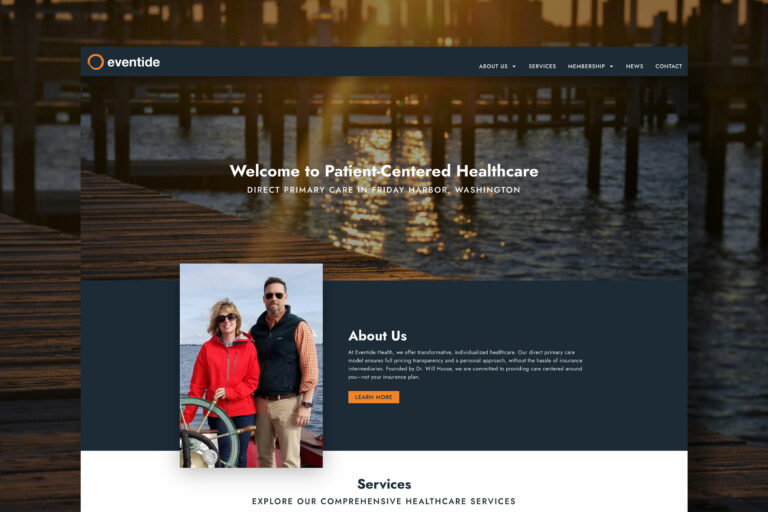Maximizing your website’s visibility starts with implementing the best practice in SEO. This article takes you through the crucial steps—from refining your keyword strategy to optimizing page elements and establishing authoritative backlinks. With a focus on current and effective techniques, you’ll be equipped to revamp your SEO approach for tangible results.
Key Takeaways
SEO best practices are crucial for enhancing website visibility and require continuous adaptation to search engine algorithm updates, user behavior shifts, and competitive changes.
Keyword research and on-page optimization, such as using effective title tags, meta descriptions, and proper keyword placement, are foundational to SEO success, complemented by technical improvements like site speed and mobile-friendliness.
Off-page SEO, local SEO, and regular monitoring of KPIs through tools like Google Analytics and Search Console are indispensable for building authority and measuring success, which must be informed by staying updated with the latest SEO trends and industry news.
Understanding SEO Best Practices

Search Engine Optimization, or SEO, is all about increasing your website’s visibility in organic search engine results. The goal is to attract visitors who are likely to become customers or return users. But how exactly can you achieve this? The answer lies in a combination of technical website setup, content creation that aligns with user interests, and building reputable backlinks.
However, it’s important to remember that SEO is a continuous process. Search engine algorithms, user behavior, and competition are constantly changing, requiring ongoing attention and refinement of strategies. Implementing SEO best practices can directly contribute to increased website traffic and promote domain authority, but it’s crucial to stay updated and adaptable to maintain and improve your SEO efforts.
The Role of SEO Best Practices
SEO best practices play a vital role in enhancing your website’s visibility. They are essential for achieving higher search engine rankings and driving more organic traffic to websites. This doesn’t just mean stuffing your content with keywords; it’s about making your content valuable and easy for search engines to understand.
A key part of this is on-page optimization. This includes:
Ensuring search engines understand a page’s topic and keywords
Using title tags and meta descriptions as virtual shop fronts on Google’s search results
Influencing click-through rates and search alignment
Helping potential customers find your website among the sea of search results.
Additionally, using internal links from other relevant pages on your site can increase your PageRank and send authority from high-authority pages to low-authority ones, aiding Google in understanding the page’s topic.
The Evolution of SEO Best Practices
SEO best practices aren’t static — they’ve evolved over time. As search engines innovate and change, so too must our SEO strategies. Google’s algorithm updates, for example, can significantly impact website rankings. That’s why it’s essential for marketers and webmasters to stay informed about these changes.
Just as the digital landscape continues to evolve, SEO best practices must adapt and grow. It’s crucial to stay updated and informed about the latest strategies to sustain or enhance your competitive status. Staying ahead of the game isn’t just about keeping up with changes — it’s about anticipating them and being ready to adapt your SEO strategy as needed.
Keyword Research: Finding the Right Keywords

Keyword research is the foundational step in the SEO content optimization process. It’s about discovering the phrases that potential buyers enter into search engines. This is essential for creating an informed content strategy that aligns with what your audience is looking for.
But keyword research isn’t a one-time task. SEO strategies, including keyword research, must adapt to evolving user behaviors and search patterns. This ensures you effectively connect with your audience and stay relevant in their search queries. Staying in tune with your audience’s search habits and adapting your keywords accordingly is key to optimizing your site’s visibility.
Tools for Effective Keyword Research
Keyword research tools offer a wealth of information that can inform your SEO strategy. But with so many potential keywords, how do you choose the ones that will drive the most traffic to your site? This is where keyword filtering comes in.
Keyword filtering within keyword research tools is essential for selecting high-performing keywords that align with search intent. By narrowing down options based on relevance and search volume, you can focus on keywords that will have the most impact. This allows you to fine-tune your keyword selection and ensure your content is optimized for the phrases your audience is actively searching for.
Analyzing Keyword Competition
Understanding your competition is a vital part of effective keyword research. By analyzing competitors’ keywords, you can gain insights into which terms they rank for. This can help gauge the level of keyword competition and uncover new keyword opportunities.
But it’s not just about finding which keywords your competitors are ranking for. It’s also about understanding the types of content that attract backlinks to their sites. By examining these, you can shape your own content creation strategy to compete more effectively in your industry. This strategic approach, coupled with the use of keyword filters to identify low-KD (Keyword Difficulty) keywords, can give you a competitive edge in your SEO efforts.
On-Page Optimization: Enhancing Your Content
On-page optimization is all about enhancing your content to improve its visibility on search engines. It involves several techniques, such as keyword placement, crafting effective title tags, and utilizing headers.
For instance, placing keywords early in page content can improve your search rankings because search engines like Google place emphasis on terms at the top of a webpage. Similarly, using the main keyword in the alt tags, titles, meta descriptions, and the main body of the content can optimize your content for search engines.
Moreover, incorporating semantic keywords and relevant keywords in the on-page content can enhance relevance and avoid ranking for irrelevant searches.
Title Tags and Meta Descriptions
Title tags and meta descriptions play a significant role in on-page optimization. They serve as your virtual shop front on Google’s search results. An effective title tag and meta description can influence click-through rates and search alignment.
To maximize their effectiveness, title tags should ideally be around 50 to 60 characters, ensuring about 90% of titles display correctly in search engine results. Including the target keyword in the title tag is also essential as it represents the page’s topic and is key for SEO prominence. But remember, Google recommends using one main keyword per title tag and avoiding keyword stuffing to improve SEO effectiveness.
Headers and Subheaders
Headers and subheaders are more than just structural elements of your content. They play a significant role in on-page optimization. Google acknowledges header tags as a strong signal for understanding page content.
H1 tags should capture the main theme of the page, while H2 and H3 tags should be used for subheadings to outline the structure and context of the content. Not only do header tags that break up text contribute to a more scannable and user-friendly content layout, but they can also positively impact SEO.
Consistent header tag styles and lengths across a website enhance user experience by providing a familiar and easy-to-follow content structure.
Image Optimization

Images are a crucial part of any website, but do you know they can also affect your SEO? Yes, optimizing images with descriptive filenames can improve SEO. This aids in how search engines like Google interpret the content of images.
In addition, utilizing descriptive alt text in images optimizes SEO by providing additional context and meaning for search engines. This means that even if an image doesn’t load on a user’s screen, the alt text can still provide valuable information about what the image contains.
Technical SEO: Optimizing Website Performance

Technical SEO is all about ensuring that search engines can effectively scan and index your website. It encompasses elements like URL structure, navigation, and internal linking. These technical elements are key to allowing search engines to understand your site and rank it appropriately in search results.
But technical SEO isn’t just about making your site searchable. It’s also about improving site usability, ensuring mobile-friendliness, and addressing Core Web Vitals. These factors contribute to a solid user experience, which can prevent pogo-sticking (when users quickly navigate away from your site) and signal to search engines that your content is relevant.
Site Speed and Mobile-Friendliness
Site speed and mobile optimization are critical elements of technical SEO. In today’s fast-paced digital world, users expect websites to load quickly, especially on mobile devices. In fact, site loading speed is a significant ranking factor in Google’s algorithm.
The importance of mobile-optimized websites is underscored by Google’s mobile-first indexing, which uses the mobile version of web pages for ranking. Websites optimized for mobile devices offer several benefits:
They rank better in search results
They lead to improved user experiences
They increase engagement and conversions
They significantly impact local SEO.
Structured Data and Schema Markup
Structured data, also known as schema markup, is another important aspect of technical SEO. This kind of data helps search engines better understand and interpret website content, resulting in an enhanced appearance in search results.
By implementing schema markup, you provide essential information to search engines. This can lead to:
More accurate search results
Improved visibility of your website on SERPs
Display of rich search results, including ratings, reviews, and price information directly in the SERPs
This offers users a more detailed and attractive presentation of your site right in the Google search results, compared to search engine results pages of other search engines.
Off-Page SEO: Building Authority and Trust
Off-page SEO is all about what happens outside your website. It involves techniques that can help build your website’s reputation and authority. A significant part of off-page SEO is backlinking, which refers to the process of other websites linking back to yours.
Each quality backlink acts as an endorsement of your website’s credibility and authority. Therefore, the quality of backlinks is more important than their quantity in off-page SEO. Building backlinks should focus on quality, aiming to earn links from reputable websites that your customers read. But remember, purchasing backlinks can often lead to short-term gains or no results at all, as Google can penalize websites with bought links.
Link Building Strategies

Link building is a strategic process that involves getting other websites to link back to your website. High-quality backlinks remain a strong Google ranking signal, with a clear correlation observed between high-quality links and higher search rankings.
Effective outreach to relevant websites necessitates a compelling pitch to secure backlinks. Strong relationships with industry websites can lead to valuable backlink opportunities. Additionally, identifying and replacing broken links on external sites with links to your own content can be an effective strategy for link acquisition.
Other strategies include providing expert input through HARO, which can result in high-quality backlinks from journalists and media outlets, bolstering your website’s authority.
Social Media and Content Promotion
Social media and content promotion also play a crucial role in off-page SEO. Engagement on social media platforms can boost your SEO, particularly for local SEO strategies.
Sharing your keyword research data with your social media marketing team can help target customers effectively and distribute content proactively. This integrated approach ensures that all your online marketing efforts are working together to optimize your website’s visibility.
Local SEO: Targeting Local Audiences
Local SEO is about optimizing your website to attract more business from local searches. It’s particularly important for businesses that operate in specific geographic locations. A solid local SEO strategy can help your business stand out in local search results and attract more local customers.
Google My Business is a key tool for local SEO. Businesses should ensure they create and verify their page, use Google Posts, and manage online reviews. Including location names in title tags is also standard practice for local business websites to clarify their geographic focus. For local SEO, it’s crucial for a business’s name, address, and phone number (NAP) to be consistently listed across the internet.
Google My Business Optimization
Optimizing your Google My Business profile can significantly improve your local search rankings. It’s crucial for businesses to accurately and completely fill out their Google My Business profile, as this information can appear in local search results, Google Maps, and Google’s Knowledge Panel.
In addition to adding basic information, you should also consider sharing regular updates through Google Posts and managing online reviews. Engaging with customer reviews by soliciting and responding to them can significantly enhance the appeal and credibility of your Google My Business profile.
Developing a strategy for soliciting customer reviews involves creating a process for requesting reviews from customers and providing timely and appropriate responses.
Local Citations and Reviews
Local citations are mentions of your business’s name, address, and phone number on other websites. They are crucial for local SEO. Ensuring data accuracy across local citations is essential to maintain consistency and help users find correct business information.
Online reviews also contribute to your business’s credibility and can influence its local search rankings. Managing online reviews and maintaining a positive online reputation can significantly improve your local SEO.
Monitoring and Measuring SEO Success
Monitoring and measuring your SEO success is crucial for making informed decisions to improve your SEO strategies over time. Regular tracking of your SEO performance can help you understand what’s working, what’s not, and where you can improve.
It’s important to be patient and consistent when monitoring your SEO progress. SEO is a long-term strategy, and it can take time to see results. But with regular reporting and careful analysis of your SEO performance, you can continually refine your strategies and improve your website’s visibility.
Key Performance Indicators (KPIs)
Key Performance Indicators (KPIs) are crucial for measuring your SEO success. Backlinks and organic traffic are key KPIs in measuring SEO success. There is a definite correlation between the amount of organic traffic and the number of websites linking to a page.
But remember, every business is unique. So, it’s important to create your own tailored set of SEO KPIs that cater to your specific goals and needs. This can help you effectively measure your SEO performance and make informed decisions to enhance your SEO strategies.
Using Google Analytics and Search Console
Google Analytics and Search Console are powerful tools for understanding your website’s performance. Google Search Console is a vital tool for understanding website performance in search results, including overall visibility and accessibility for search engine crawlers. Moreover, it allows for the tracking of a website’s impressions and clicks in search results, serving as a direct indicator of SEO effectiveness.
On the other hand, Google Analytics offers the capability to:
Segment organic traffic
Understand which search engines are driving traffic and identify user behaviors
Gain insights into user demographics, such as location
Gain insights into the timing of searches
These insights can inform your content strategies and optimization efforts for different user segments.
Staying Updated with SEO Trends
Staying updated with SEO trends is vital in this ever-evolving digital landscape. Regular updates in search engine algorithms can substantially impact website rankings, making it essential to keep up with the latest changes.
The inherently competitive nature of SEO obligates practitioners to keep abreast of the latest strategies to either sustain or enhance their competitive status. SEO professionals can advance their expertise by learning from new strategies, instruments, and techniques, thereby establishing their position as industry leaders.
Following Industry News and Blogs
Staying updated with SEO trends is crucial, and industry blogs and websites run by SEO experts are a dependable resource for current and reliable information. Regularly consuming content from reputable industry sources such as Moz and Search Engine Land can help you stay informed about the latest algorithm updates and new tactics.
Moreover, digital marketing webinars offer an accessible and interactive means to learn from industry leaders and keep pace with the ever-changing landscape of SEO. Following industry news and blogs and attending webinars can equip you with the knowledge and insights to stay ahead of the SEO curve.
Attending SEO Conferences and Webinars
Attending SEO conferences and webinars is another great way to stay updated with SEO trends. These events offer unique networking opportunities, insights into SEO best practices, and exposure to thought leadership.
SEO webinars offer several benefits:
Attendees can gain in-depth knowledge about specific topics without the need to travel.
Industry experts often share their insights and experiences, providing valuable perspectives and advanced techniques.
Keeping current with the latest trends, algorithm updates, and new tools is facilitated through the information shared at SEO conferences and webinars.
Summary
In this article, we’ve traversed the vast landscape of SEO, exploring everything from keyword research and on-page optimization to technical and off-page SEO. We’ve also delved into the importance of local SEO and how to measure and monitor SEO success.
Remember, SEO isn’t a one-time task but an ongoing process. As the digital landscape continues to evolve, so too must your SEO strategies. Stay updated with the latest SEO trends, continuously refine your strategies, and remember the importance of quality over quantity. With a proactive and informed approach, you can elevate your site’s visibility and achieve SEO success.
Frequently Asked Questions
What are the top 5 SEO strategies?
The top 5 SEO strategies include focusing on the “People Also Ask” section, studying your competition, utilizing internal and backlinks, refreshing outdated content, and paying attention to core web vitals. Additionally, it is important to maintain a fast, mobile-friendly website, target long-tail keywords, optimize local listings, create helpful content, and re-optimize past content.
What are the 3 steps to successful SEO?
To run a successful SEO campaign, you need to understand your audience and their search habits, optimize your website with fresh content, and focus on converting website visitors. By following these steps, you can improve your SEO strategy and drive better results.
What is the best practice for SEO and SEM?
The best practice for SEO and SEM is to personalize ad campaigns, ensure message-match between ads and pages, maintain a 1:1 ratio of ads to landing pages, follow conversion-centered design principles, test and optimize constantly, and pair SEO efforts with fully optimized landing pages. This ensures a strong digital marketing strategy.
Which of the following is a good SEO practice?
A good SEO practice is to optimize code for faster page loads, prioritize mobile optimization, and avoid duplicate content to improve search engine rankings. Always aim to enhance user experience and site performance, while also following Google’s guidelines for best results.
What is SEO and why is it important?
SEO, or Search Engine Optimization, is crucial for boosting website visibility, attracting potential customers, and enhancing domain authority. It involves increasing a website’s visibility in organic search engine results to drive traffic and engagement.















